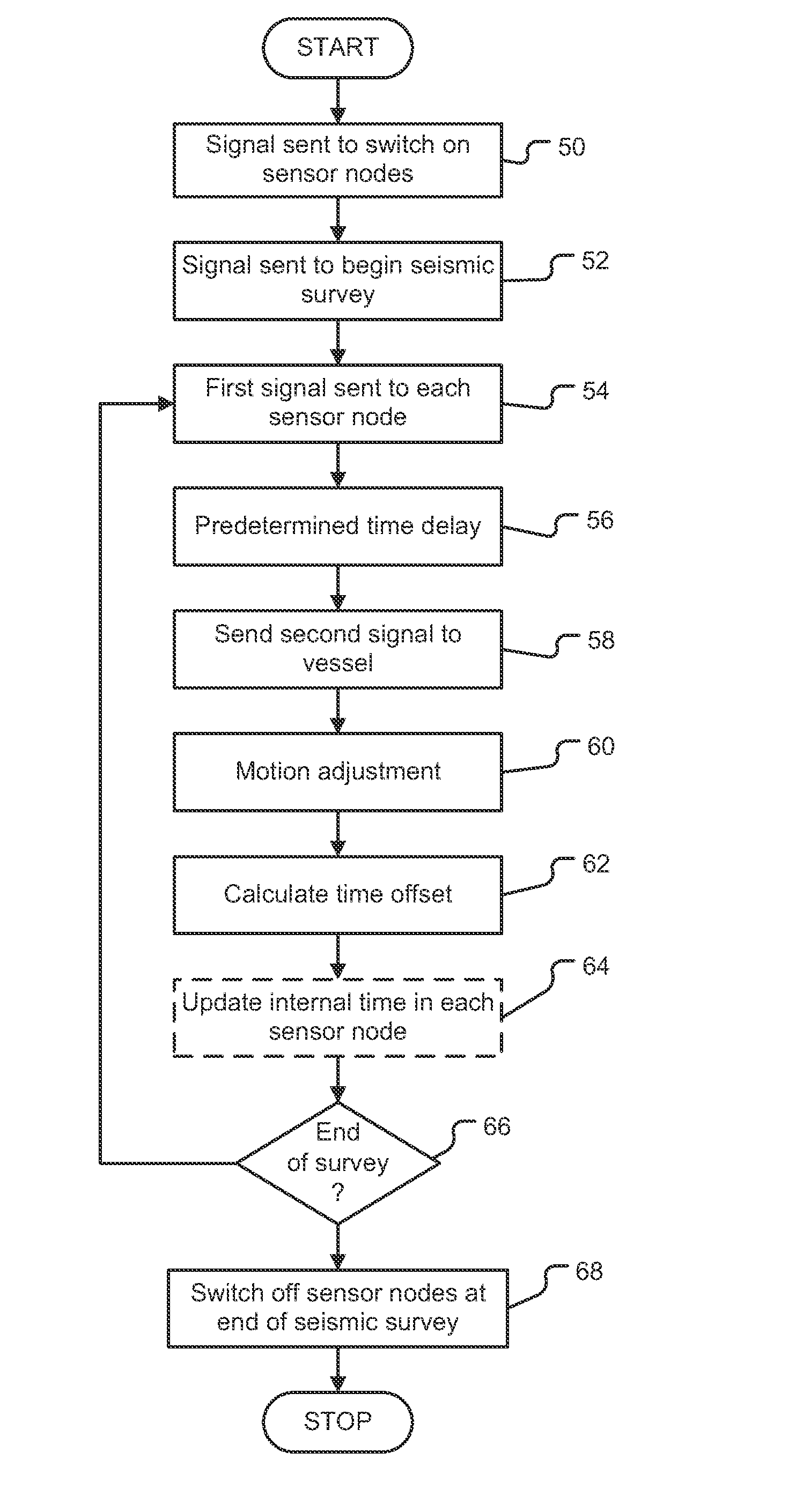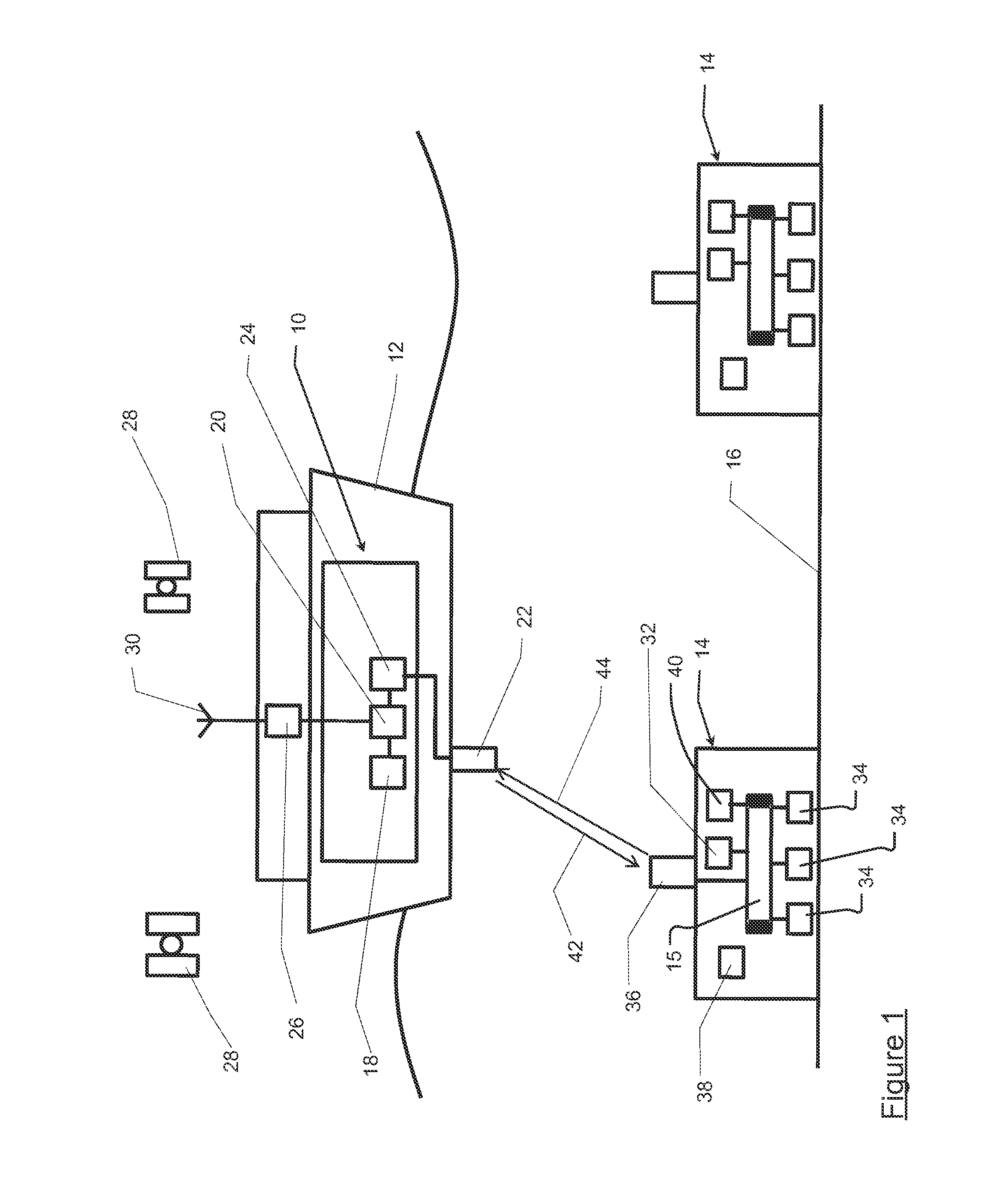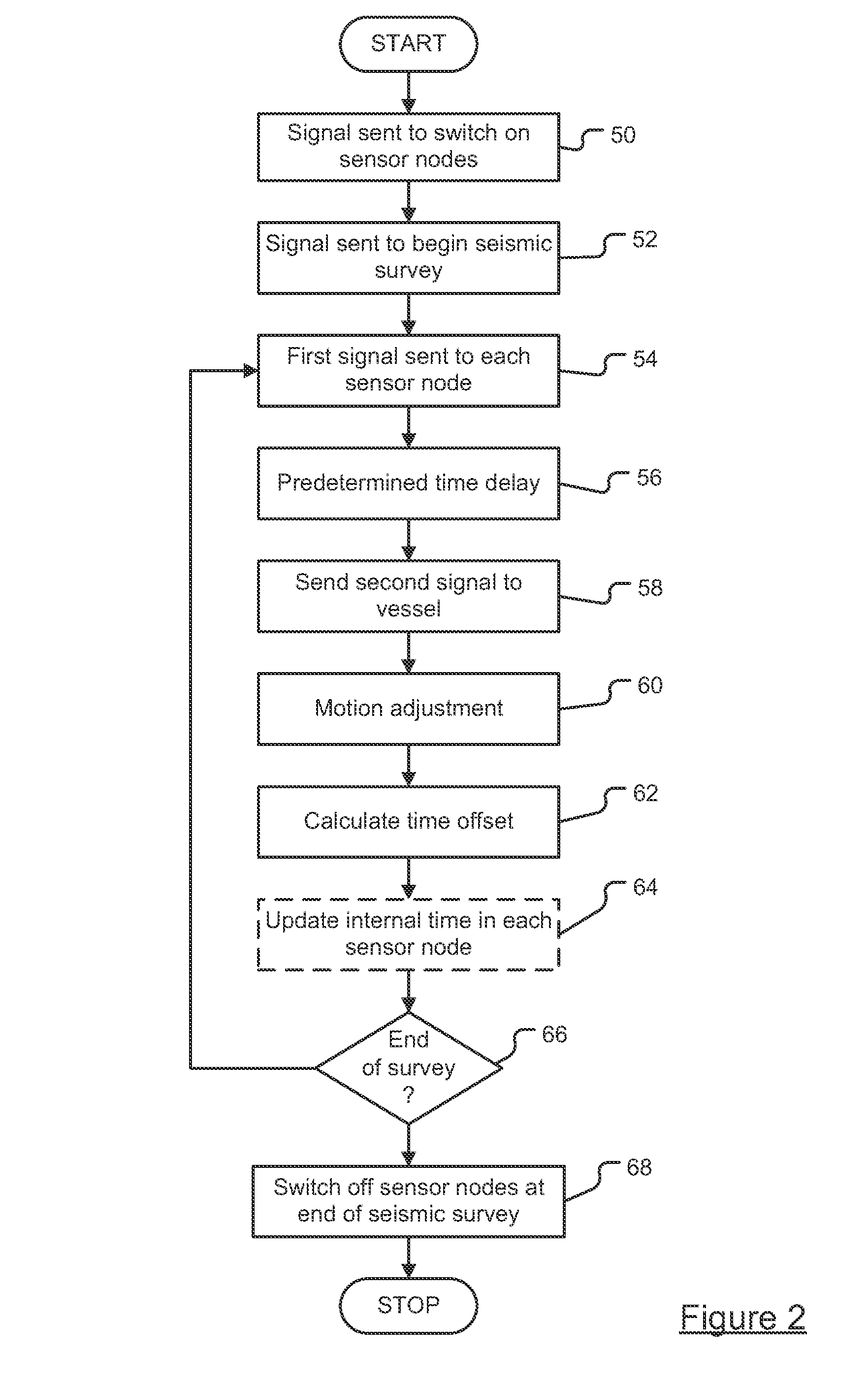System for measuring a time offset and method of measuring a time offset
- Summary
- Abstract
- Description
- Claims
- Application Information
AI Technical Summary
Benefits of technology
Problems solved by technology
Method used
Image
Examples
Embodiment Construction
[0051]Throughout the following description identical reference numerals will be used to identify like parts.
[0052]Referring to FIG. 1, in a system for measuring time offsets an acoustic control system 10 is disposed in a surface vessel 12, which can be a ship or boat, the acoustic control system 10 being adapted to send and receive signals between an array of sensor nodes, generally indicated 14, disposed upon the seabed 16. The acoustic control system 10 comprises a processing resource 18, for example a processor, operably coupled to a communications hub 20, the communications hub 20 being coupled to an acoustic transceiver 22 for the purpose of sending and receiving acoustic signals to and from the sensor nodes 14. The acoustic transceiver 22 is attached to or integrally formed with the underside of the hull of the vessel 12 and so is immersed below the sea surface when in use. The acoustic transceiver 22 can be any suitable acoustic transceiver, for example a suitably adapted Fus...
PUM
 Login to View More
Login to View More Abstract
Description
Claims
Application Information
 Login to View More
Login to View More - R&D
- Intellectual Property
- Life Sciences
- Materials
- Tech Scout
- Unparalleled Data Quality
- Higher Quality Content
- 60% Fewer Hallucinations
Browse by: Latest US Patents, China's latest patents, Technical Efficacy Thesaurus, Application Domain, Technology Topic, Popular Technical Reports.
© 2025 PatSnap. All rights reserved.Legal|Privacy policy|Modern Slavery Act Transparency Statement|Sitemap|About US| Contact US: help@patsnap.com



